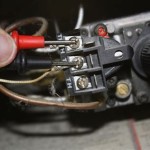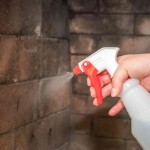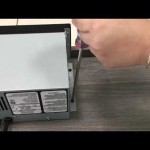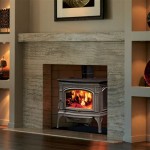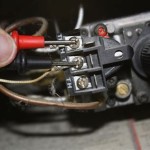Are Glass Fireplace Screens Safe to Use?
Glass fireplace screens are a common fixture in many homes, offering a combination of aesthetic appeal and functional benefits. These screens are designed to enhance the visual experience of a fire while providing a barrier between the flames and the surrounding environment. However, their safety is a valid concern for homeowners, particularly those with children and pets. Evaluating the safety of glass fireplace screens involves considering various factors, including the type of glass used, the design of the screen, proper installation, and responsible usage.
Understanding the potential risks and benefits associated with glass fireplace screens is crucial for making informed decisions about their use. The following sections will delve into the safety aspects of these screens, examining key considerations to ensure a secure and enjoyable fireplace experience.
Types of Glass and Heat Resistance
The type of glass used in a fireplace screen significantly impacts its safety and performance. Not all glass is created equal, and the ability to withstand high temperatures is a critical factor. Ordinary window glass is not suitable for fireplace screens due to its low heat resistance and tendency to shatter at high temperatures. Tempered glass and ceramic glass are the two primary types of glass used in fireplace screens, each offering distinct properties.
Tempered glass is manufactured through a process of controlled thermal or chemical treatments to increase its strength. This process makes the glass more resistant to breakage and, if it does break, it shatters into small, relatively harmless pieces instead of sharp shards. This feature is a significant safety advantage, reducing the risk of serious injury. However, even tempered glass has its limits. Prolonged exposure to extremely high temperatures can still cause it to crack or fail. Therefore, it is essential to ensure that the tempered glass used in a fireplace screen is specifically rated for fireplace use and meets established safety standards.
Ceramic glass, also known as pyroceramic glass, offers superior heat resistance compared to tempered glass. It is specifically designed to withstand the intense heat generated by a fireplace without cracking or warping. Ceramic glass is commonly used in high-end fireplace screens and fireplace doors due to its exceptional thermal stability. It can withstand continuous temperatures of up to 1300 degrees Fahrenheit or even higher depending on the specific formulation. While ceramic glass is more expensive than tempered glass, its enhanced heat resistance provides an added layer of safety and longevity.
When selecting a glass fireplace screen, it is imperative to verify the type of glass used and its heat resistance rating. Reputable manufacturers will clearly specify the type of glass and its suitability for fireplace applications. Additionally, ensure that the glass meets industry standards and certifications, such as those provided by organizations like the American National Standards Institute (ANSI).
Screen Design and Construction
The design and construction of a glass fireplace screen play a crucial role in its overall safety. A well-designed screen will not only provide a barrier against sparks and embers but also prevent accidental contact with the hot glass surface. Several design features contribute to a safe and effective fireplace screen.
A sturdy frame is essential for supporting the glass panel and maintaining its structural integrity. The frame should be constructed from durable materials such as steel or cast iron. These materials can withstand the heat generated by the fireplace and provide a stable base for the glass. The frame should also be designed to minimize heat transfer to the surrounding environment, preventing the screen from becoming excessively hot to the touch.
Proper ventilation is another important design consideration. While the primary function of a fireplace screen is to contain sparks and embers, it is also important to allow for adequate airflow to maintain efficient combustion within the fireplace. A screen with insufficient ventilation can cause smoke to back up into the room, leading to indoor air quality issues. Many glass fireplace screens incorporate strategically placed vents or openings to facilitate airflow while still providing effective protection.
The presence of handles or guards is also crucial for preventing accidental burns. Glass fireplace screens can become extremely hot during use, posing a burn risk to anyone who touches them. Handles should be made from heat-resistant materials such as wood or insulated metal, and they should be positioned in a way that minimizes the risk of contact with the hot glass surface. Guards or barriers can also be added to the screen to further prevent accidental contact, particularly for homes with young children.
The overall size and fit of the fireplace screen are also important safety considerations. The screen should be large enough to completely cover the fireplace opening, preventing sparks and embers from escaping into the room. However, it should not be so large that it obstructs airflow or poses a tripping hazard. A properly fitted screen will sit securely in front of the fireplace, providing effective protection without compromising safety or functionality.
Proper Installation and Usage Guidelines
Even the most well-designed and constructed glass fireplace screen can pose a safety hazard if it is not installed and used correctly. Following proper installation and usage guidelines is essential for ensuring a safe and enjoyable fireplace experience. Installation should be performed according to the manufacturer's instructions. This typically involves securely attaching the screen to the fireplace opening using appropriate hardware. It is important to ensure that the screen is stable and cannot be easily knocked over. If the screen comes with adjustable feet or mounting brackets, make sure they are properly adjusted to ensure a level and secure fit.
Maintaining a safe distance between flammable materials and the fireplace is crucial for preventing fires. Keep curtains, furniture, rugs, and other combustible items at least three feet away from the fireplace opening. Never store flammable liquids or materials near the fireplace, as they could easily ignite if exposed to heat or sparks.
Supervision is important, especially when children and pets are present. Children may not understand the dangers associated with hot surfaces and open flames, and pets may accidentally bump into the screen, causing it to fall over. Always supervise children and pets closely when the fireplace is in use, and consider installing a barrier or fence around the fireplace to prevent accidental contact.
Regular maintenance is essential for ensuring the continued safety and performance of a glass fireplace screen. Inspect the screen regularly for any signs of damage, such as cracks, chips, or loose hardware. If any damage is detected, repair or replace the screen immediately. Clean the glass panel regularly to remove soot and debris, using a glass cleaner specifically designed for fireplace screens. Avoid using abrasive cleaners, as they can scratch the glass and reduce its heat resistance.
Avoid overloading the fireplace with excessive amounts of wood. Overloading can cause the fireplace to overheat, potentially damaging the glass screen and increasing the risk of a fire. Burn only seasoned firewood, as green or damp wood produces more smoke and creosote, which can accumulate in the chimney and increase the risk of a chimney fire. Never burn trash, paper, or other non-wood materials in the fireplace, as these can release harmful chemicals and increase the risk of a fire.
The type of fireplace also has implications for glass screen safety. Gas fireplaces, for example, generally produce less soot and creosote than wood-burning fireplaces, potentially extending the lifespan of the glass screen and reducing the need for frequent cleaning. However, it is still important to follow all safety guidelines and regularly inspect the screen for any signs of damage.
By carefully considering the type of glass, the design and construction of the screen, and following proper installation and usage guidelines, homeowners can minimize the risks associated with glass fireplace screens and create a safe and enjoyable fireplace experience.

Fireplace Glass Doors Vs Screens Full Service Chimney

Fireplace Glass Doors Vs Screens Full Service Chimney

Which Is Best Fireplace Doors Vs Screens

Why Are Glass Fireplace Doors So Important Valley Chimney Sweep Restoration

Why Should I Trade My Fireplace Screen For A Door

Fireplace And Stove Glass Safety Tophat Pro

Fireplace Glass Doors Vs Screens

Hot Glass Safety Screen Pilgrim Home Hearth

Fireplace Glass Doors Vs Screens Full Service Chimney

Benefits Of Glass Doors Fireplace Door Sets Burlington Wi

